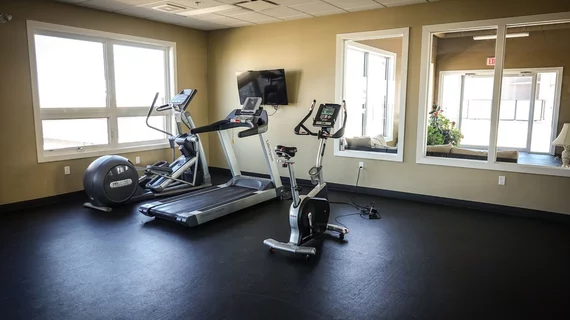Cardiac MRI (CMR) is rarely performed in conjunction with stress testing of heart patients—nuclear perfusion and echocardiography are far more common imaging aids—but a large new study may begin to turn the tide toward magnets as an eventual first-line diagnostic option.
In the multicenter study, the findings of which were published online Feb. 8 in JAMA Cardiology, John Heitner, MD, of New York Presbyterian Brooklyn Methodist Hospital and colleagues followed up on 9,151 patients in real-world settings with known or suspected coronary artery disease (CAD) for up to 10 years following first vasodilator stress CMR.
They found the use of stress CMR significantly improved the accuracy of mortality prediction in two different risk models, both in the overall patient population and in some 16 distinct subpopulations defined by history of CAD and left ventricular ejection fraction.
Additionally, use of CMR improved risk reclassification.
Seven geographically diverse hospitals in the U.S. participated. The researchers used an automated process to collect, de-identify and aggregate data from finalized clinical reports, then assessed mortality using the U.S. Social Security Death Index.
The median patient age was 63 (range, 51 to 70) years, and 55 percent of the enrollees were men. Normal stress CMR results came back for 4,408 patients, while 4,743 had abnormalities. During a median follow-up period of five years, 1,517 patients died.
After adjusting for patient age, sex, and cardiac risk factors, the team conducted a Kaplan-Meier survival analysis and found a strong association between an abnormal stress CMR and mortality in all patients, patients with and without a history of CAD, and patients with normal and abnormal left ventricular ejection fraction.
“These findings suggest that stress CMR has broad prognostic significance regardless of patient age, symptoms or risk factors,” the authors concluded. “Accordingly, while real-world evidence studies may in general be more susceptible to patient selection bias compared with randomized clinical trial studies, the consistent Kaplan-Meier findings across 16 different cross-sections of a heterogeneous multicenter population suggest that patient selection bias is unlikely to affect the primary conclusion of our study: that stress CMR is significantly associated with mortality.”
In their discussion, Heitner et al. pointed to numerous previous reports and meta-analyses concluding that stress CMR is more accurate than conventional stress-imaging options for diagnosing CAD. Still, they noted, Medicare data shows that CMR represents less than 0.1 percent of all imaging-based stress tests performed in the U.S.
The authors added that their findings, which drew from more than 48,000 patient-years of follow-up, “provide a foundational motivation” to study the comparative effectiveness of stress CMR against other modalities.

